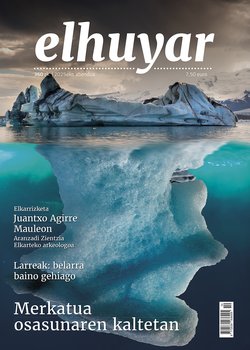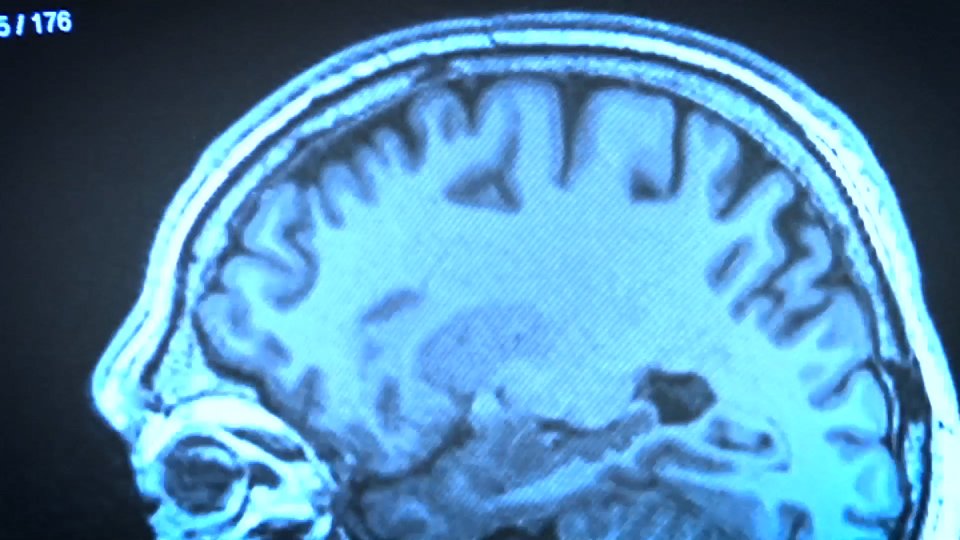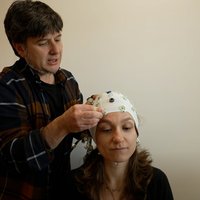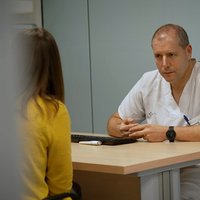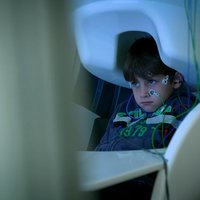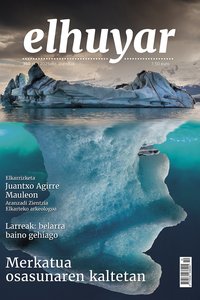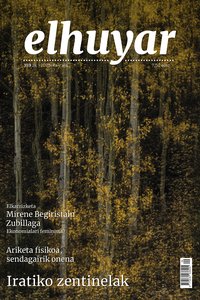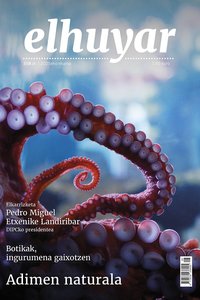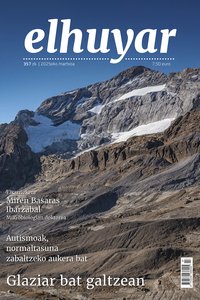Neighbor arrives in Pamplona, a leisure program for young people to promote science and technology
Starting in September, young people between the ages of 10 and 14 will be able to carry out scientific and technological activities at the Museum of Environmental Education in the headquarters of Vecindario. Registration is open on the initiative’s website. The recent diagnosis in Pamplona has shown that young people feel that science and technology are far away and that gender stereotypes have a great influence on the choice of studies.
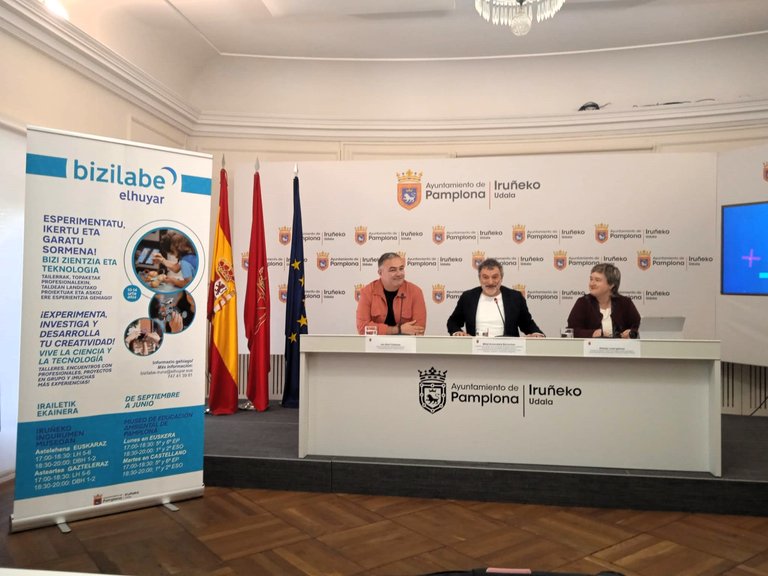
This morning, a new leisure offer was presented at the City Council of Pamplona, aimed at people between 10 and 14 years old. The program of the course will be launched in September 2025 by the City Council and Elhuyar. The presentation was attended by Mikel Armendáriz Barnechea, Councillor for Economic Promotion, European Projection, Innovation, Youth and Development Cooperation of the City of Pamplona; Jon Abril Olaetxea, General Coordinator of Elhuyar; and Aitziber Lasa Iglesias, Head of Education at Elhuyar STEAM.
It will be offered at the Museum of Environmental Education in Pamplona, in Basque on Mondays and in Spanish on Tuesdays. The 17:00-18:30 hours will be for 5th and 6th grade students and the 18:30-20:00 hours will be for 1st and 2nd grade students. Registrations are already open on the Vecindario website.
The goal of the neighbourhood is to promote scientific and technological experiences among young people, as research shows that science-related experiences influence young people’s aspirations for the future. With the aim of achieving this goal, the boys and girls will work as researchers and inventors in Vecindario, guided by experts in science and technology. Through games and experiments, they will assimilate all kinds of content and develop science and technology projects. In addition, they will have a wide range of experiences related to relationships throughout the course, including visits from professionals working in the area and visits to local companies. In this way, they will get to know professionals working in science and technology, as well as the scientific and technological reality of the environment.
As highlighted in the presentation of the program, we tend to place the STEAM disciplines in the school context, but it has been shown that extra-curricular scientific-technological experiences have a positive impact on the scientific literacy of children and adolescents. In fact, the practice of science and technology even outside the school environment has certain benefits: it improves the understanding of scientific concepts, the close observation of scientific content implies a transition from theory to practice, allows the use of new technologies and demonstrates the transversality of scientific work. In this way, young people can see that science is present in many areas of daily life, especially on critical social issues (e.g. pollution, sustainability, etc.). Through extracurricular activities, they reflect and discuss these issues, which helps them to develop critical thinking. In these activities, they have the opportunity to discover new content, many of which require the elaboration of certain values, for example, they abandon erroneous stereotypes when building relationships with women researchers, which mainly affects girls. Therefore, leisure time is essential for the personal and social development of children and young people, and Auzabe wants to make a contribution in this context.
Neighbour started in Bilbao in 2017 by Elhuyar and is currently in operation in Bilbao, Elgoibar, Abanto-Zierbena and Laudio, together with the local municipalities. Each year, approximately 2,000 young people participate in the project.
STEAM diagnosis of young people in Pamplona
The City Council and Elhuyar have just carried out a STEAM diagnosis in Pamplona, and Auzabe wants to reverse the results of this study. In fact, the diagnosis has made it clear that young people place themselves away from the fields of science and technology.
A total of 1,049 responses were received from 3rd and 4th year ESO students in Pamplona (51.9% girls, 45.2% boys and 2.9% non-binaries).
Armendáriz of the City Council of Pamplona summarizes the main conclusions of the diagnosis:
- We can say that traditional gender stereotypes influence the interest of young people on certain issues. Thus, the issues that most interest girls are personal image and fashion, medicine and health, gender equality and social issues. On the other hand, the topic that most interests boys is sports, followed by topics related to food and science and technology, with the same level of interest.
- The level of interest in the lessons is generally low. Girls are most interested in Biology (6,4) and History (6,1) and have shown a similar interest in Chemistry (5,1) and Art (5), while boys are most interested in Technology and Computer Science (6,3) and have shown a similar interest in the following subjects: History (6.1) and Mathematics (5.8). Thus, STEM subjects are among the subjects that are most valued by young people, but Technology and Informatics are not mentioned among the subjects that are most valued by girls.
- With regard to future work in the STEM field, girls and boys perceive a very different level of competence: 33.1% of girls and 50% of boys consider themselves capable of working in this sector. The disparity is also evident in their interest in working in the STEM field in the future: 23.2% of girls and 39% of boys say they would like to work in the STEM field in the future.
- Their interest in certain subjects and their future work in the STEM field is closely related to the self-perception of the ability of these subjects to learn and act in the STEM field in the future.
- The view of girls and boys on the lifestyle of STEM professionals is not the same, as boys have valued it slightly better than girls (6.1 and 5.2, respectively).
- Young people believe that STEM professionals are wise, hardworking, curious, intelligent, and entrepreneurial people. Some of these traits are common adjectives to describe good students, and these stereotypical images of STEM professionals drive many young people away from studies and jobs in these areas.
- As with the interest shown by young people on certain issues, gender stereotypes influence the choice of future professions. Girls have mostly chosen professions related to health and social sciences: teacher, psychologist, doctor, child educator, nurse, etc. Boys have chosen professions related to technology, education and sport among the professions that most interest them: engineer, computer science, sport, teacher, mechanic, firefighter.
- About 40% of young people say that they do not know what is going on in and around Pamplona; of the remaining 60%, the majority of girls and boys are quite clear about the work that is being done in the region, as they have related it to the automotive industry, industry, food and technology.
- As for the words that have been mentioned to indicate what it suggests to them to work in the future in the industry of science and technology or in a similar workplace in the area of Pamplona, there is a difference between the connotation of the words that have been used by girls and boys. The girls have mentioned more words of negative connotation and the boys have valued better the idea of working in STEM jobs in Pamplona and the surrounding area in the future.
- The approach to working conditions for women and men in science and technology is very different between girls and boys. 33.1% of girls believe that women and men who work in the STEM field work in different conditions, while 14.1% of boys believe this.
- The comparison between the general and the close approach shows that girls have expressed a greater ignorance about gender equality in companies in and around Pamplona in the field of science and technology. Thus, 21.5% of girls, who believe that women and men who work in the STEM field in and around Pamplona work in different conditions, have expressed greater ignorance.
- About 30% of young people think that the benefits and harms of scientific research and technological inventions in society are balanced. Therefore, much work remains to be done for responsible research and innovation in order to achieve an active community and a more critical society with regard to STEM.
All the results of the questionnaire have been compiled in the report and video “STEAM diagnosis of young people in Pamplona”.
Buletina
Bidali zure helbide elektronikoa eta jaso asteroko buletina zure sarrera-ontzian


